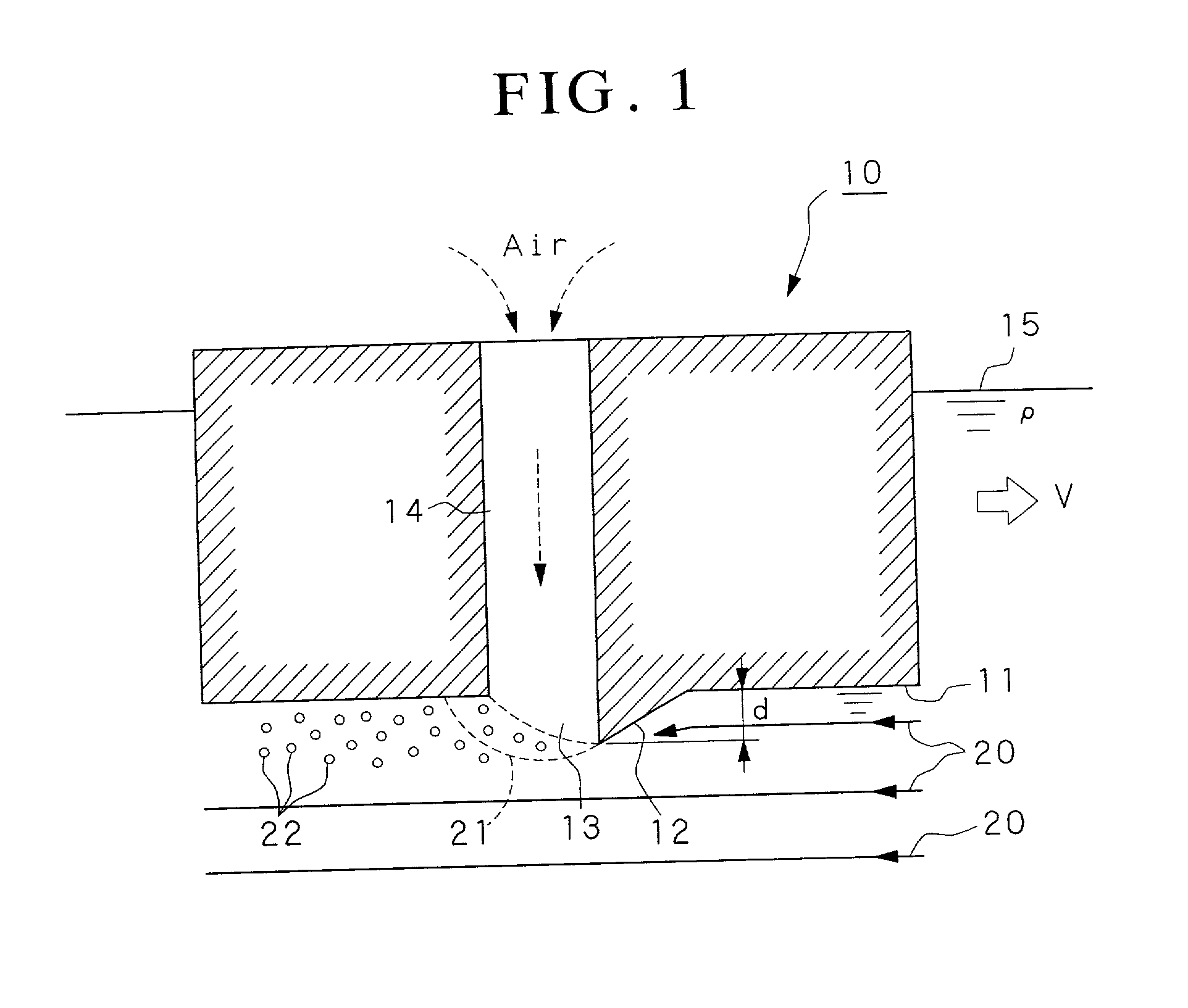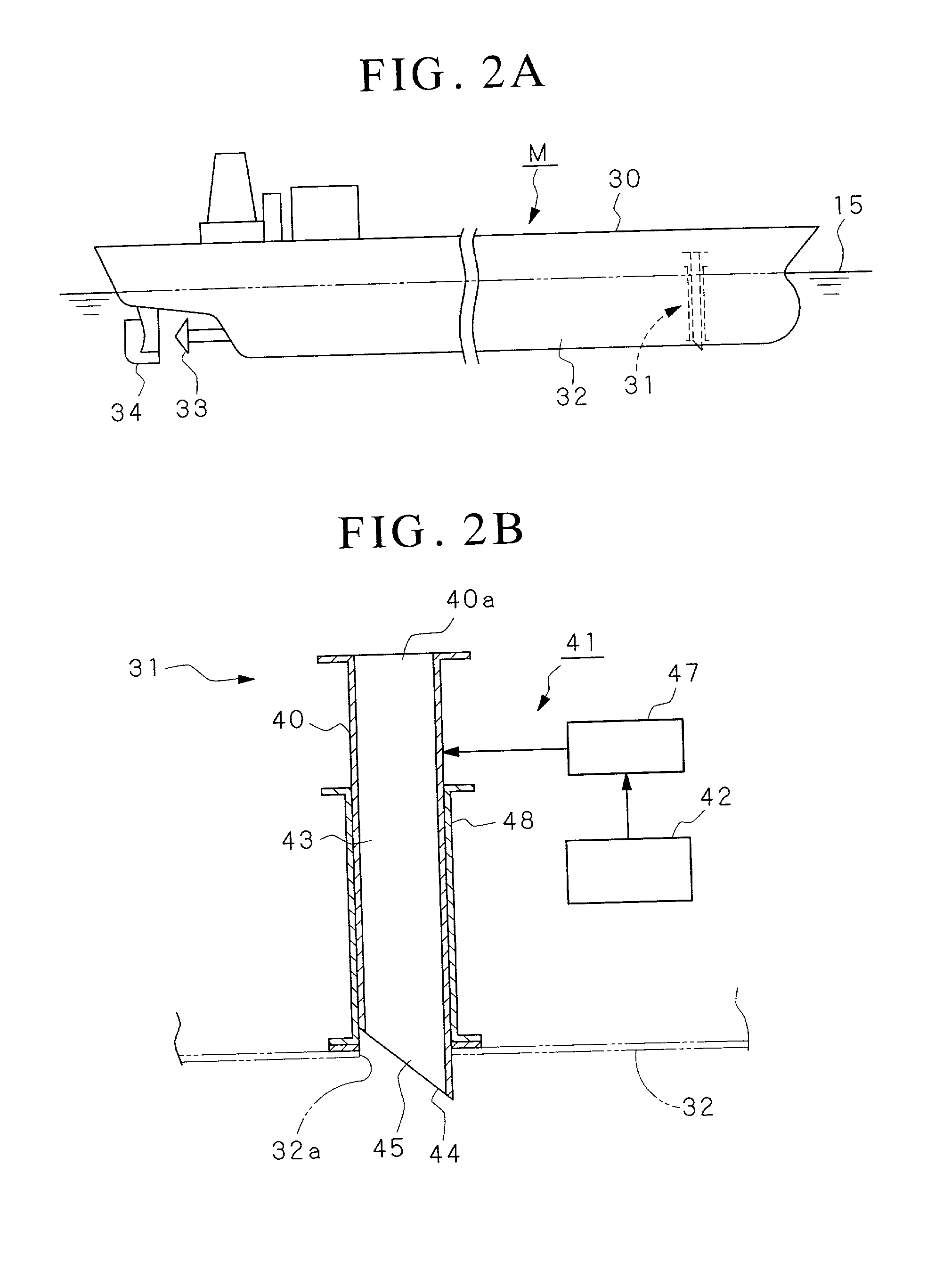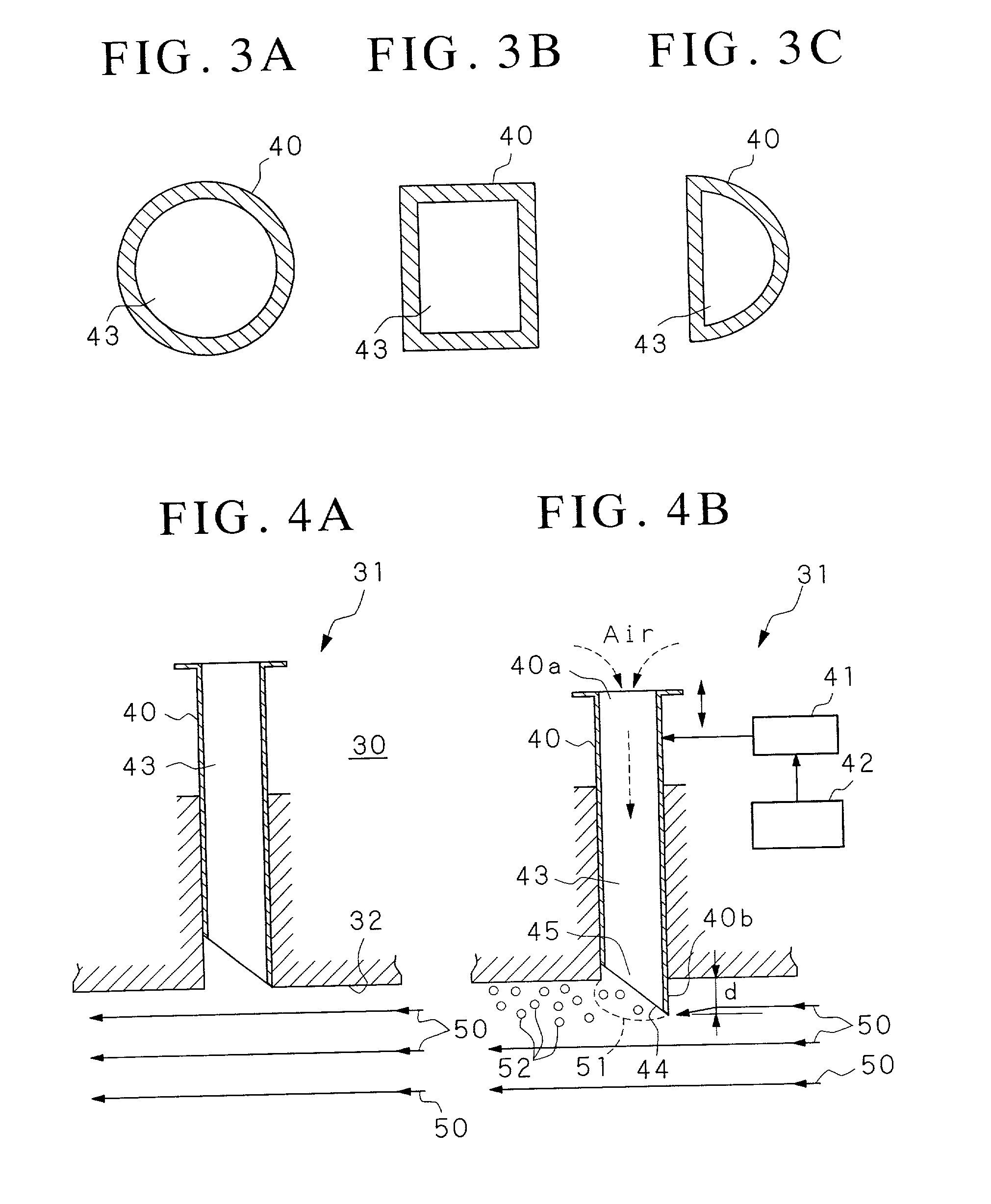Frictional resistance reducing vessel and a method of reducing frictional resistance of a hull
- Summary
- Abstract
- Description
- Claims
- Application Information
AI Technical Summary
Benefits of technology
Problems solved by technology
Method used
Image
Examples
embodiment 2
[0134] The following provides an explanation of another embodiment of the frictional resistance reducing vessel as claimed in the present invention with reference to the drawings. FIG. 6A shows an example of arranging bubble generator 111, instead of bubble generator 31, on the bottom of frictional resistance reducing vessel M shown in FIG. 2A.
[0135] As shown in FIG. 6B, this bubble generator 111 is equipped with outer cylinder 121, which extends in the vertical direction and is fixed to hull 30, inner cylinder 122 in the form of an air induction pipe (AIP) that is housed within outer cylinder 121 while being able to be attached and removed and being able to move freely along the axial direction of outer cylinder 121 (vertical direction), negative pressure forming portion 123 provided on the lower end of inner cylinder 122, and position adjustment unit 124 for adjusting the position (height) in the axial direction of inner cylinder 122 relative to outer cylinder 121.
[0136] Outer cyl...
embodiment 3
[0152] The following provides an explanation of still another embodiment of the frictional resistance reducing vessel as claimed in the present invention with reference to the drawings. FIG. 9A is a side view of the starboard side in the vicinity of the bow of frictional resistance reducing vessel M shown in FIG. 2A that shows an example in which bubble generator 201 is arranged on the bottom of frictional resistance reducing vessel M shown instead of bubble generator 31. In addition, FIG. 9B is an overhead view as viewed from the bottom of vessel M, while FIG. 9C is a cross-sectional view taken along line A-A in FIG. 9A. In these drawings, reference symbol 202 is an outer cylinder, 203 an inner cylinder, 204 a stopping mechanism (protrusion adjustment means) and 205 a cover. Among these, outer cylinder 202, inner cylinder 203 and stopping mechanism 204 compose bubble generator 201 in frictional resistance reducing vessel M.
[0153] Outer cylinder 202 is a through path that passes ver...
embodiment 4
[0167] The following provides an explanation of still another embodiment of the frictional resistance reducing vessel as claimed in the present invention with reference to the drawings. In FIG. 10A, reference symbol Ma indicates a frictional resistance reducing vessel, 60 a hull, 62 a hull shell plate (submerged surface), 63 a propeller, 64 a rudder and 311 a bubble generator.
[0168] As shown in FIG. 10B, bubble generator 311 is equipped with indentation 320 formed so as to be recessed from hull shell plate 62 of the vessel bottom, flow path 321 which passes through hull 60 and is open above and below draft line 15, and negative pressure forming member 322 arranged inside indentation 320.
[0169] Indentation 320 is formed by chamber 330 attached to hull shell plate 62 from the inside of hull 60. Namely, chamber 330 is formed into the shape of a box of which one face is open, and that open end is connected to hull shell plate 62 from the inside of hull 60. Furthermore, chamber 330 is co...
PUM
 Login to View More
Login to View More Abstract
Description
Claims
Application Information
 Login to View More
Login to View More - R&D
- Intellectual Property
- Life Sciences
- Materials
- Tech Scout
- Unparalleled Data Quality
- Higher Quality Content
- 60% Fewer Hallucinations
Browse by: Latest US Patents, China's latest patents, Technical Efficacy Thesaurus, Application Domain, Technology Topic, Popular Technical Reports.
© 2025 PatSnap. All rights reserved.Legal|Privacy policy|Modern Slavery Act Transparency Statement|Sitemap|About US| Contact US: help@patsnap.com



